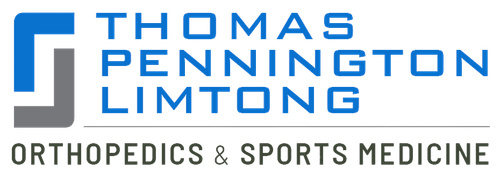 A majority of SLAP (Superior Labrum Anterior and Posterior) tear patients will respond favorably to conservative non-surgical treatments.
A majority of SLAP (Superior Labrum Anterior and Posterior) tear patients will respond favorably to conservative non-surgical treatments.
Patients of SLAP tears will be advised to rest following the injury to enable the damaged tissue to recover. Resting for a period will enable the swelling to resolve and may help mitigate the symptoms.
Thomas and Bigler Knee and Shoulder Institute, led by board certified orthopedic surgeons Dr. Steven C. Thomas and Dr. Gregory T. Bigler, provides orthopedic treatments to patients in Las Vegas, Nevada, and surrounding communities.
Common Treatments
Treatments that are often used to address SLAP tears are as follows:
- Anti-inflammatory Drugs
- Physical Therapy
- Cortisone Injections
Patients with persistent symptoms despite these treatments may have to undergo arthroscopic surgery of the shoulder. There are multiple specific surgeries that may be undertaken.
It is vital to understand that SLAP tears usually develop along with other shoulder issues such as rotator cuff tears, and shoulder arthritis. For such patients, the surgical treatment will have to account for these conditions as well.
SLAP Tear Surgery
The main surgical options for the treatment of SLAP tears are as follows:
Debridement of the SLAP tear
In case a SLAP tear is debrided, the torn part of the labrum is trimmed away to develop a smooth edge. This treatment is appropriate only for minor tears that do not affect the biceps tendon. For the debridement surgery to be successful, the biceps tendon within the shoulder joint (known as the biceps anchor) should be stable.
In case the biceps anchor is not stable, merely debriding out the torn part of the labrum is not likely to address the symptoms of pain. Patients who undergo isolated debridement recover quicker than those who require surgical repair.
SLAP Repair
A SLAP repair refers to an arthroscopic procedure that utilizes sutures to rejoin the torn labrum to the shoulder socket. For patients who have an otherwise healthy shoulder but who want to remain active athletically, this procedure is most suitable.
In this procedure, the surgeon uses a surgical implant to reconnect the compromised labral tissue to the shoulder socket’s bone. Surgeons typically use a device known as a suture anchor for this surgery. The anchor is inserted into the bone, and then the sutures are wrapped around the labrum and tied firmly to the bone.
Biceps Tenodesis
This surgery involves cutting the biceps tendon in the area where it connects to the labrum and reinserting it in another site. The premise behind biceps tenodesis is that by reducing the forces that put a strain on the SLAP area, the symptoms will be resolved.
In general, patients above 40 years of age or those with associated biceps tendonitis or tearing typically undergo a biceps tenodesis. This procedure can be performed by placing a tiny incision over the top portion of the shoulder, or arthroscopically.
The choice of technique to perform biceps tenodesis will depend mainly on the other conditions that are undergoing treatment within the shoulder joint.
Outcomes of Surgery
The outcomes of various surgical procedures have been reported in many scientific research studies. SLAP repair is the most frequently analyzed surgical procedure.
Over 90 percent of patients receiving an arthroscopic SLAP repair with modern suture anchors have reported good outcomes while over 85 percent are able to resume competitive sports activities.
Board certified orthopedic surgeons Dr. Thomas and Dr. Bigler receive patients from Las Vegas, Nevada and nearby areas for orthopedic treatments.If you would like to schedule an appointment or learn more about the Knee and Shoulder Institute procedures & treatments performed by Las Vegas, Nevada board-certified surgeons Steven C. Thomas, MD and Gregory T. Bigler, MD. Contact the office today click here.
